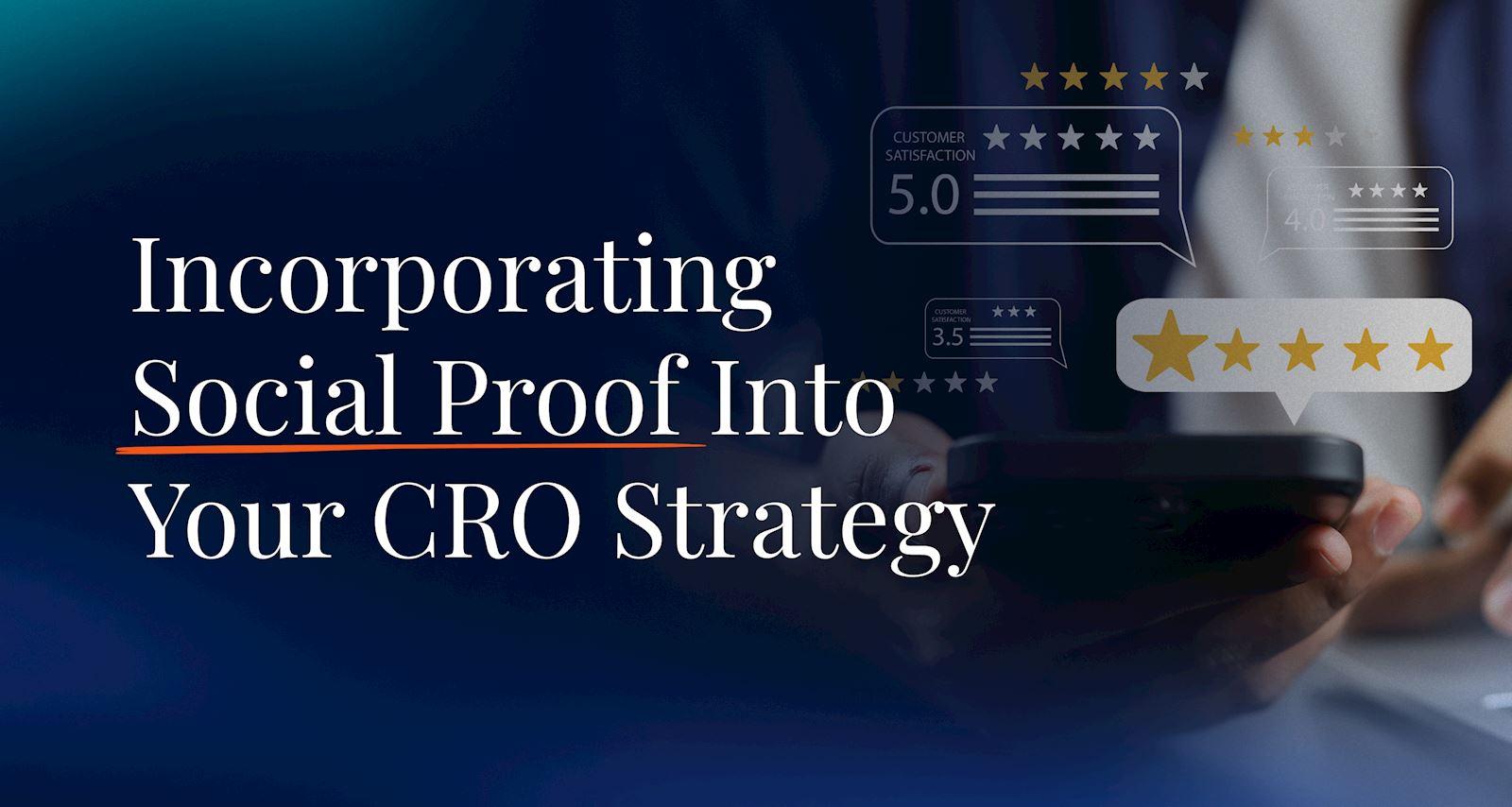The Role of Social Proof in CRO: Why It Matters and How to Optimize It
Published by Spinutech on February 14, 2025

Social proof is one of the most powerful Conversion Rate Optimization (CRO) tools available.
It leverages the influence of others — customer reviews, star ratings, testimonials, endorsements, and affiliations — to build trust and reduce hesitation in a buyer’s decision-making process. Social proof can increase credibility, drive engagement, and boost conversions when used effectively.
Despite its clear value, many landing pages and conversion funnels either overlook social proof entirely or fail to optimize it for maximum impact. Understanding the role of social proof and testing its placement, type, and quality can make a measurable difference in your CRO strategy.
What is Social Proof?
Social proof refers to the validation people seek from others when making decisions. It signals credibility, trust, and quality, reassuring potential customers that others have successfully engaged with your brand.
Examples of social proof include:
- Customer Reviews & Ratings: Testimonials, case studies, and user-generated ratings highlighting positive experiences.
- Affiliations with Major Brands: Logos of recognized companies you’ve worked with, partnerships, or endorsements.
- Influencer & Celebrity Endorsements: High-profile individuals backing your product or service.
- User-Generated Content (UGC): Customer-submitted photos, videos, or testimonials that showcase real-world use.
- B2B Trust Signals: Client logos, industry awards, and media mentions that reinforce credibility.
Where Social Proof Fits in the Customer Journey
The effectiveness of social proof depends on where and how it appears within the customer journey. Here are key areas to test:
1. Placement on the Page
Where you place a page element matters more than you think.
Ask (and then test):
- Should testimonials appear above the fold, or are they more effective near a CTA?
- Does featuring logos early in the journey build trust faster?
- Would a dedicated reviews section convert better than scattering proof throughout the page?
2. How Much Social Proof to Use
Too little social proof might fail to establish trust. Conversely, too much can overwhelm or seem disingenuous — users may question authenticity if every review is glowing. Finding the right balance is key: A mix of star ratings, testimonials, and case studies often performs well.
3. Quality of Social Proof
Highlight the best reviews — a 2.5-star rating might do more harm than good. Prioritize reviews that mention specific benefits and experiences rather than vague praise. Showcase endorsements from trusted industry experts or well-known companies.
4. Type of Social Proof
In some cases, logos of trusted brands may be more persuasive to your target audience than written testimonials. If you’re an eCommerce brand, user-generated content (like customer photos in reviews) may outperform generic product descriptions.
A/B testing different types — star ratings vs. testimonials, customer reviews vs. influencer endorsements — can help identify what resonates most with your audience.
How to Source and Leverage Social Proof
Many brands already have social proof but aren’t using it effectively.
Here is where to find and integrate it:
- Customer Reviews & Ratings: Pull from review platforms, surveys, and direct customer feedback.
- Social Media Mentions: Showcase organic customer praise, influencer collaborations, or user-generated content.
- Case Studies & Testimonials: Formalize positive customer experiences into structured case studies.
- Trust Signals: Highlight any certifications, media mentions, or industry awards your company has received.
Social Proof is the Missing Link
Your high-converting landing pages may already prioritize messaging, visuals, and calls-to-action — but what about proof? A well-optimized landing page should include the right type of social proof in the right location, reinforcing why a potential customer should trust your brand.
Testing and optimizing social proof enables you to strategically place trust signals where they have the highest impact. By refining your approach, you can remove friction in the buying journey and increase conversion rates at every stage.
If you need help finding the right social proof for your brand, let's chat.